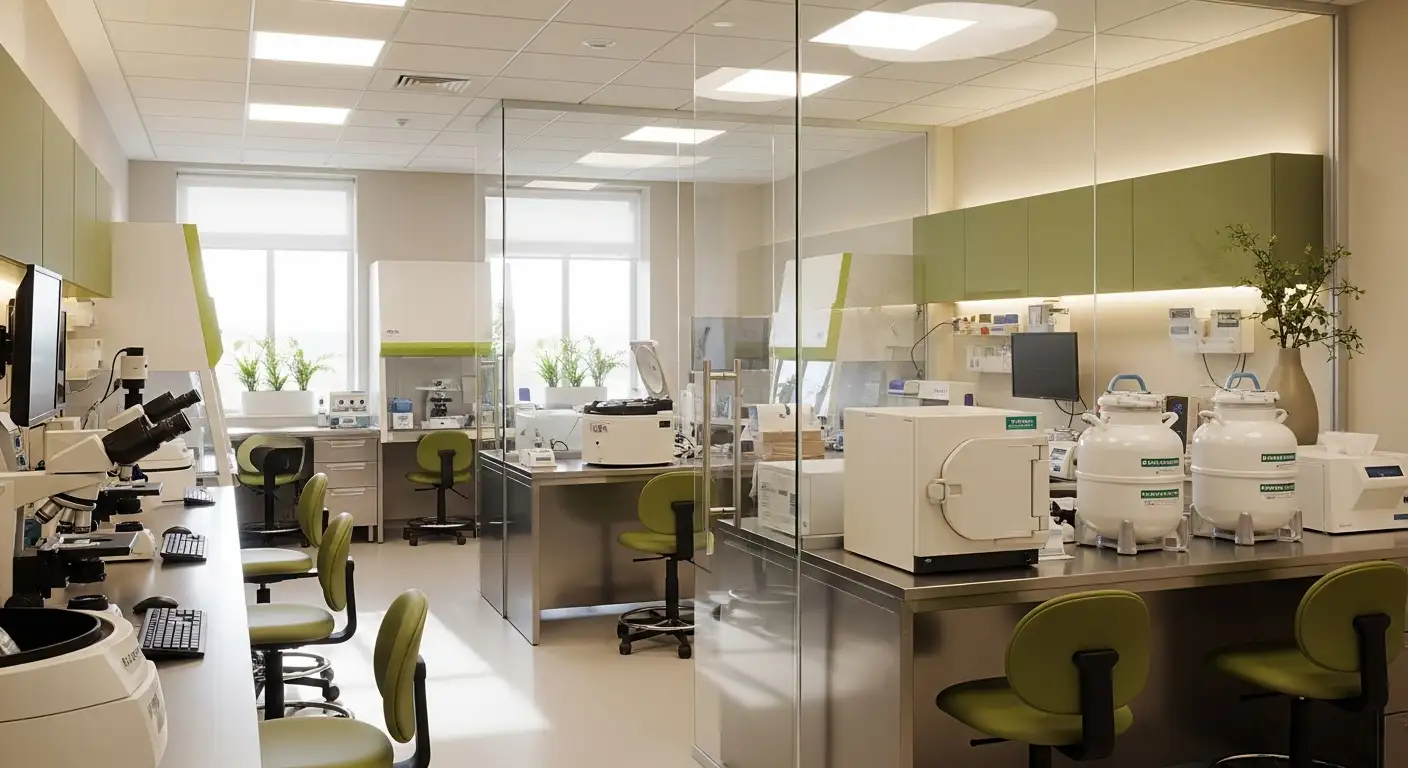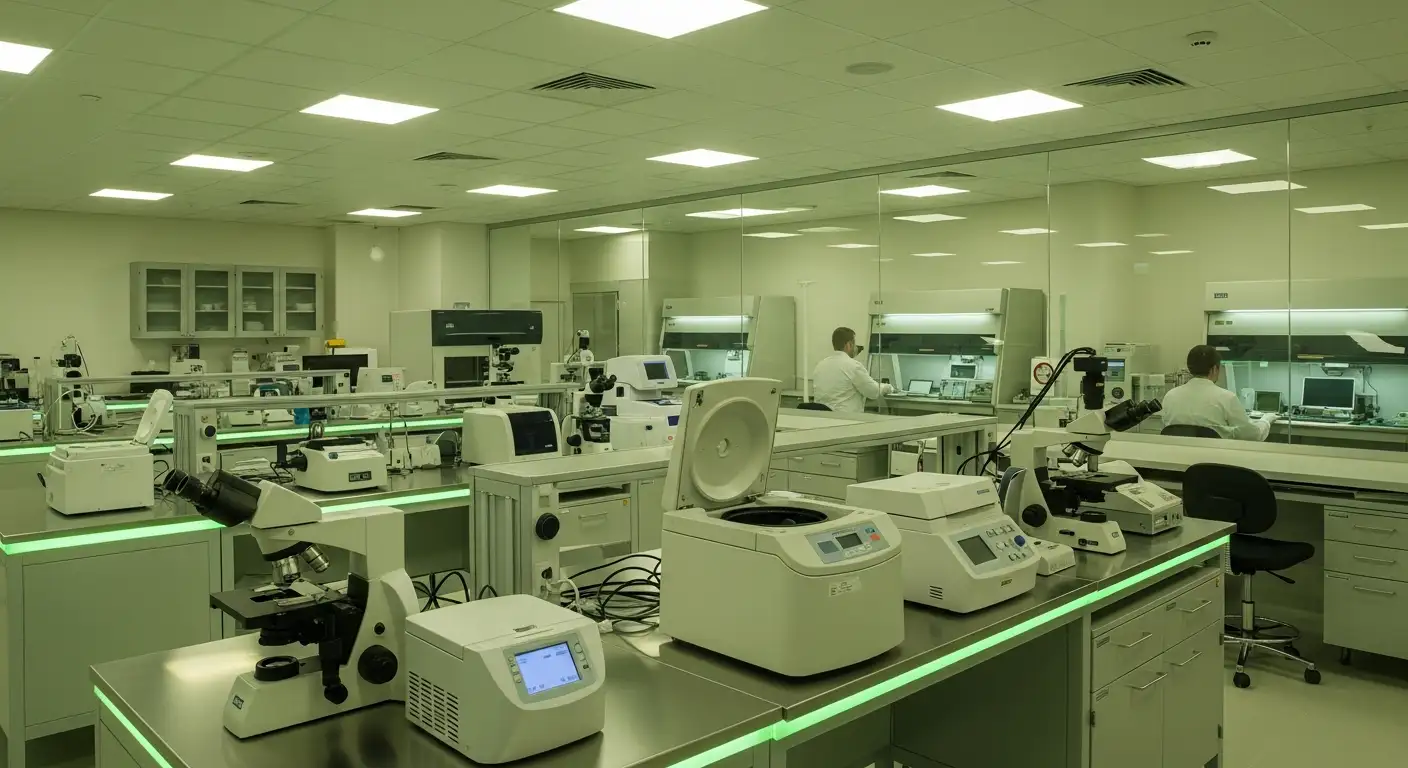The role of AMH levels in female fertility assessments
Unlocking Fertility: Understanding the Critical Role of AMH Levels in Women's Reproductive Health

Introducing AMH and Its Significance in Fertility Assessments
Anti-Müllerian Hormone (AMH) has emerged as a fundamental biomarker in assessing female fertility. Produced by cells within ovarian follicles, AMH levels reflect the ovarian reserve, providing valuable insights into a woman’s reproductive potential. This article explores what AMH is, how its levels inform fertility evaluations, and the broader implications for individuals considering conception or fertility treatments.
What is AMH and How Does It Reflect Ovarian Reserve?
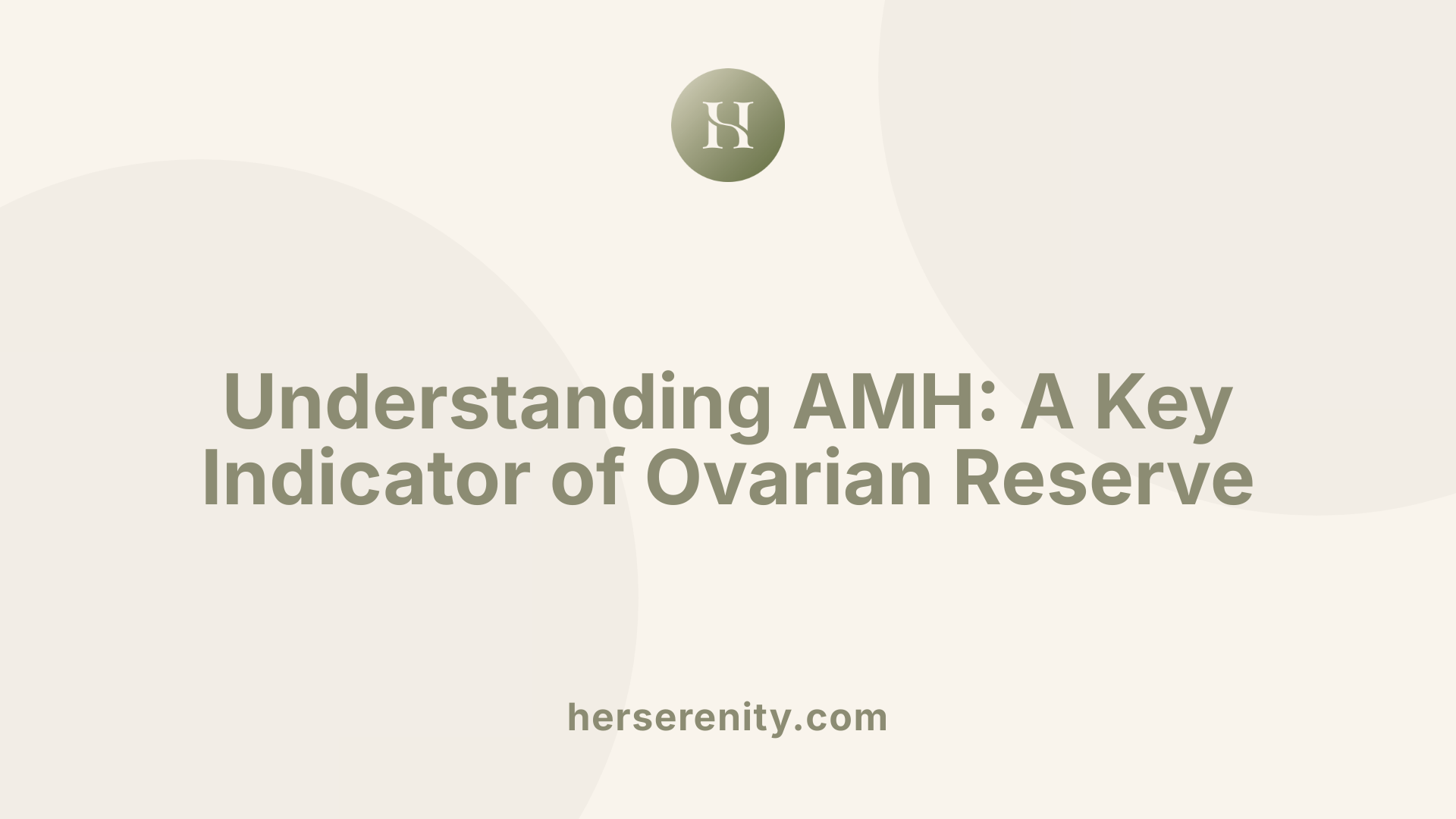
Definition and Origin of AMH
Anti-Müllerian hormone (AMH) is a hormone produced by granulosa cells within ovarian follicles. These follicles nurture developing eggs from early stages of growth. AMH is secreted into the bloodstream and can be measured to provide insights about a woman's reproductive health.
Correlation Between AMH Levels and Ovarian Reserve
AMH levels reflect the ovarian reserve, which is essentially the number of remaining eggs in the ovaries. Higher levels of AMH generally suggest a greater number of eggs and a larger ovarian reserve. Conversely, lower AMH levels indicate fewer eggs and a reduced ovarian reserve.
Biological Function of AMH in Ovarian Follicles
AMH acts as a growth regulator in ovarian follicles, influencing the recruitment and development of eggs. By modulating follicle growth, AMH helps maintain the balance and health of the ovarian egg supply.
Relationship Between AMH Levels and Egg Quantity vs. Quality
While AMH is a reliable marker of the quantity of eggs available, it does not provide information about egg quality, which is a critical factor in determining fertility and pregnancy success. Therefore, AMH levels measure egg supply but do not predict a woman's ability to conceive or carry a pregnancy.
Age-Related Changes in AMH Levels
AMH levels naturally peak around age 25 and steadily decline with age, eventually becoming undetectable at menopause. This decline reflects ovarian aging and diminishing egg numbers over time. Although AMH levels can assess ovarian aging, they do not precisely predict the timing of menopause or overall fertility potential.
Additional Information
AMH testing is done via a simple blood test that can be performed any time during the menstrual cycle due to stable hormone levels. The test aids in fertility planning and treatment decisions but is usually interpreted alongside other diagnostic markers for a comprehensive evaluation.
How AMH Testing Is Performed and Interpreted

How is AMH testing conducted?
AMH testing involves a straightforward blood draw and does not require special timing related to the menstrual cycle. This is because AMH levels remain relatively stable throughout the cycle, making the test convenient to perform at any point. The blood sample can be collected at a gynecologist's office, fertility clinic, or via at-home testing kits. However, results from at-home tests should always be interpreted by a healthcare professional to ensure a complete and accurate understanding in the context of overall reproductive health.
What are the normal values and variability in AMH testing?
Normal AMH levels generally range between 1.0 and 3.0 ng/mL, but these values can vary depending on the laboratory and the specific assay used. A notable challenge in AMH testing is the lack of standardization across commercially available assays, which can lead to variability in results. This variability means AMH levels should be interpreted carefully and in combination with other clinical assessments rather than in isolation.
Limitations and considerations in interpreting AMH test results
While AMH testing provides valuable information about ovarian reserve, it does not measure egg quality nor directly predict fertility potential or pregnancy success. AMH levels decline naturally with age and may be influenced by other factors such as obesity, medications, or ovarian conditions like PCOS.
Role of healthcare professionals in interpreting at-home AMH tests
Given the complexities in assay variability and clinical interpretation, it's critical that AMH test results from at-home kits are reviewed by healthcare professionals. They can integrate AMH data with other hormone levels, ultrasound results, and clinical history to offer a meaningful assessment of reproductive health and fertility planning.
AMH Levels in Fertility Planning and Assisted Reproductive Technology
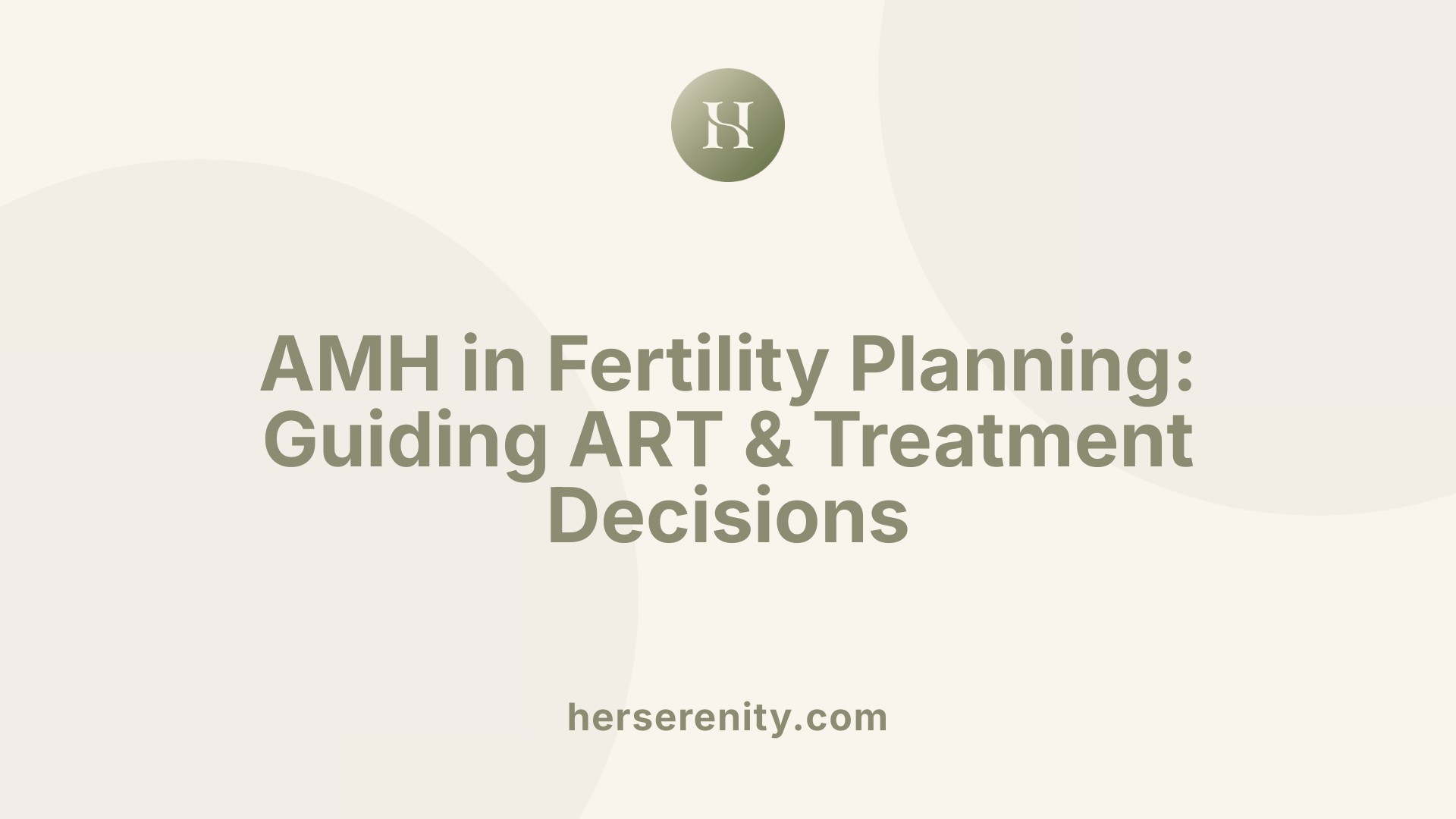
Use of AMH in Fertility Treatment Decision-Making
Anti-Müllerian hormone (AMH) levels are instrumental in planning fertility treatments, particularly in vitro fertilization (IVF). Since AMH correlates with ovarian reserve—the number of eggs available—knowing a woman's AMH helps clinicians predict how her ovaries might respond to stimulation therapies.
Predicting Ovarian Response for IVF
Women with higher AMH levels typically have a more robust ovarian reserve, which often leads to a stronger response to ovarian stimulation in IVF. This can translate to the retrieval of more eggs, increasing the chances of successful fertilization. Conversely, low AMH may suggest fewer eggs, signaling a potential poor response to stimulation.
Risks Associated with High AMH, Such as Ovarian Hyperstimulation Syndrome (OHSS)
Elevated AMH levels can signal an increased risk for ovarian hyperstimulation syndrome (OHSS), a potentially serious complication resulting from fertility medications. Knowing AMH levels allows for early identification of at-risk patients to tailor treatment and reduce complications.
Influence of AMH on Ovarian Stimulation Protocols
Clinicians utilize AMH measurements to customize ovarian stimulation protocols during IVF. Women with high AMH may require lower doses of gonadotropins to avoid overstimulation, while those with low AMH might need adjusted protocols to maximize egg retrieval efficiently and safely.
Role of AMH in Predicting Response to Medication in PCOS
In women with polycystic ovary syndrome (PCOS), elevated AMH is common and can affect treatment choices. High AMH levels in PCOS patients may predict lower ovulation success after certain medications like clomiphene citrate, guiding physicians to consider alternative treatments or interventions.
Limitations in Predicting Pregnancy Success
While AMH serves as a valuable marker for ovarian reserve and guides treatment planning, it is not predictive of pregnancy or live birth outcomes. Factors such as egg quality, embryo viability, and uterine environment play major roles that AMH levels do not capture.
AMH and Polycystic Ovary Syndrome (PCOS): Diagnostic and Treatment Implications
Elevated AMH levels as a marker in PCOS
Women with polycystic ovary syndrome (PCOS) often have circulating anti-Mullerian hormone (AMH) levels two to three times higher than those seen in women with normal ovulation. This increase reflects a larger number of antral follicles typical of PCOS and is a useful biochemical indicator tied closely to the condition.
AMH as part of diagnostic criteria for polycystic ovarian morphology (PCOM)
Updated clinical guidelines recommend using AMH measurements alongside ultrasound and clinical criteria to diagnose polycystic ovarian morphology (PCOM), a hallmark of PCOS. Although AMH alone is not diagnostic of PCOS, elevated levels support the identification of ovarian changes associated with the syndrome.
Impact of high AMH on ovulation induction and fertility treatments
High AMH concentrations in PCOS patients can influence responses to fertility treatments. For example, levels above 7.7 ng/ml predict a lower likelihood of successful ovulation with clomiphene citrate, a common ovulation-inducing agent. Additionally, very high AMH levels (above approximately 9.3 ng/ml) may correlate with reduced effectiveness of intrauterine insemination (IUI) when combined with medications like clomiphene citrate and letrozole. These findings highlight the importance of AMH in personalizing treatment plans.
Clinical relevance of AMH levels in managing PCOS-related infertility
AMH testing in PCOS aids clinicians in tailoring fertility therapies by predicting ovarian response and potential complications such as ovarian hyperstimulation syndrome (OHSS). Elevated AMH signals a heightened risk for OHSS, guiding safer dosing strategies during assisted reproductive techniques like IVF.
Effect of treatments like laparoscopic ovarian drilling (LOD) on AMH
Laparoscopic ovarian drilling (LOD) has been shown to lower serum AMH levels in women with PCOS. This reduction is interpreted as a normalization of the ovarian follicle environment, which may improve the ovarian response and decrease risks like OHSS in subsequent fertility procedures. Monitoring AMH levels post-LOD provides valuable insight into treatment efficacy and ongoing ovarian function.
| Aspect | AMH Role in PCOS | Clinical Implication |
|---|---|---|
| Diagnostic utility | Elevated AMH supports diagnosis of PCOM | Helps confirm PCOS diagnosis alongside other criteria |
| Ovulation induction response | High AMH predicts lower success with clomiphene | Guides ovulation induction strategy |
| Fertility treatment prediction | High AMH linked to poorer IUI outcomes | Aids in selecting optimal fertility treatment |
| Treatment monitoring | LOD reduces AMH, indicating improved ovarian function | Assesses treatment impact and lowers OHSS risk |
Limitations and Challenges in Using AMH as a Fertility Marker
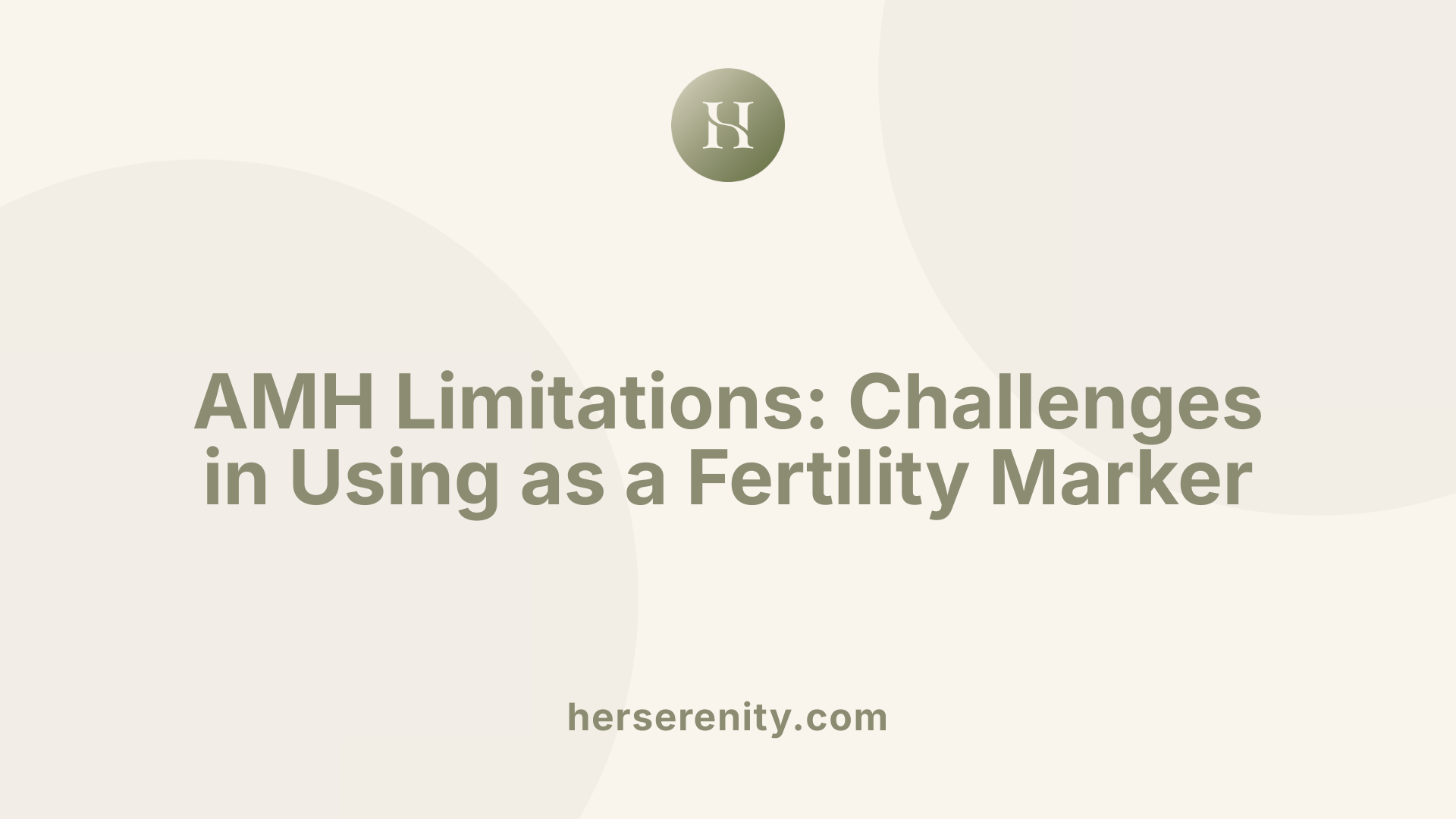
Variability and Lack of Assay Standardization
One major challenge in using AMH testing for fertility assessment is the variability among commercially available assays. Laboratories use different methods and there is currently no international standard for AMH measurement, which can cause inconsistencies in test results. This lack of assay standardization makes it difficult to compare AMH levels reliably across different clinics or over time.
Influences from Lifestyle, Medications, and Medical Conditions
AMH levels are affected by various factors beyond ovarian reserve. For example, obesity can lower AMH levels, while certain medications such as oral contraceptives and metformin may suppress them. Medical treatments like chemotherapy can cause highly variable AMH readings, further complicating interpretation.
AMH Does Not Forecast Egg Quality or Menopause Timing
Although AMH is a good indicator of the quantity of eggs, it does not provide any information about egg quality or a woman’s likelihood of achieving pregnancy. Additionally, while AMH levels decline with age and reach zero at menopause, current evidence shows that AMH cannot reliably predict the timing of menopause.
Clinical Caution in Interpreting AMH Results Alone
Due to these limitations, clinicians emphasize that AMH testing should not be used in isolation. It is important to integrate AMH results with other hormone tests (like FSH and estradiol), ultrasound findings (such as antral follicle count), and a patient’s overall fertility history before making clinical decisions.
Impact of Obesity, Contraceptives, and Chemotherapy on AMH
Specific factors can significantly alter AMH levels, potentially misleading the assessment of ovarian reserve. For instance, obesity is associated with lower AMH, while oral contraceptives may reduce circulating hormone levels temporarily. Moreover, gonadotoxic treatments like chemotherapy can produce unpredictable AMH values, thus requiring careful interpretation.
Overall, while AMH remains a valuable tool for assessing ovarian reserve, clinicians and patients should be aware of its testing limitations and interpret results within a broader clinical context.
Lifestyle Factors Influencing Fertility and Reproductive Health in Relation to AMH
How can lifestyle factors influence fertility and reproductive health?
Lifestyle choices play a significant role in shaping reproductive health and fertility potential. A balanced diet rich in antioxidants and essential nutrients nourishes ovarian tissues, supporting cell health within ovarian follicles where AMH is produced. Antioxidants help protect ovarian cells from oxidative stress, which can otherwise diminish ovarian reserve.
Avoiding harmful substances such as smoking, excessive alcohol, and environmental toxins is equally important. These factors can accelerate the decline of ovarian reserve by causing cellular damage in the ovaries. Smoking, for example, has been associated with lower AMH levels, reflecting a reduced number of available eggs.
Maintaining a healthy body weight through proper nutrition and physical activity influences hormone regulation associated with fertility. Both obesity and underweight conditions can disrupt hormonal balance, potentially lowering AMH levels and impairing ovarian function. Stress management is also vital, as chronic stress may negatively impact reproductive hormones, though its direct effect on AMH remains under research.
Connections between lifestyle factors and AMH levels
Anti-Mullerian hormone (AMH) serves as a useful biomarker to monitor ovarian reserve and the influence of lifestyle interventions on reproductive potential. Since AMH levels are relatively stable throughout the menstrual cycle, serial measurements can indicate changes in ovarian reserve over time. Lifestyle improvements like better nutrition and cessation of smoking may help slow AMH decline by protecting ovarian follicle health.
Healthcare providers often utilize AMH testing to evaluate ovarian function when advising patients on fertility preservation strategies or lifestyle modifications. This hormone measurement provides insight beyond basic fertility status and helps tailor interventions.
In summary, lifestyle factors such as antioxidant-rich nutrition, avoidance of toxins, healthy weight management, and stress control support ovarian health and can positively influence AMH levels. Utilizing AMH testing can aid in assessing how these factors affect ovarian reserve, guiding personalized fertility health plans.
Reproductive Health Services and Medical Treatments Supporting Conception

What are the common medical treatments available to assist with conception?
Medical treatments to aid conception commonly include ovulation-inducing medications such as Clomiphene citrate and gonadotropins. Clomiphene citrate is often used to stimulate ovulation in women with irregular menstrual cycles or polycystic ovary syndrome (PCOS). Gonadotropins are injectable hormones that directly stimulate the ovaries to produce multiple eggs, typically used in advanced fertility treatments.
Assisted reproductive technologies (ART) such as in vitro fertilization (IVF) and intracytoplasmic sperm injection (ICSI) play a vital role in conception. These techniques facilitate fertilization outside the body, offering solutions for various fertility challenges. Surgical interventions may also be employed to correct structural issues like blocked fallopian tubes or endometriosis.
Anti-Mullerian hormone (AMH) testing is essential in tailoring these treatments. By indicating ovarian reserve, AMH levels help predict ovarian response to medications, avoid overstimulation risks like ovarian hyperstimulation syndrome (OHSS), and guide individualized treatment plans.
How do reproductive health services support individuals and couples?
Reproductive health services provide comprehensive diagnostic and therapeutic support. They perform fertility assessments including blood tests for AMH and Follicle Stimulating Hormone (FSH), along with ultrasound evaluation of ovarian follicles and antral follicle count (AFC). This assessment offers a more complete picture of ovarian function.
Beyond diagnostics, fertility specialists offer counseling to explain test results, discuss prognosis, and recommend appropriate interventions. They manage and monitor fertility treatments, ensuring safety and maximizing chances of success. These services also empower patients with education and emotional support, helping individuals and couples make informed decisions and achieve their family planning goals.
What role does assisted reproductive technology (ART) play in conception?
ART techniques like IVF are crucial when natural conception is challenging. IVF involves ovarian stimulation to produce multiple eggs, retrieval of mature oocytes, fertilization in the laboratory, and embryo transfer to the uterus.
AMH levels significantly influence ART approaches. High AMH may indicate a strong ovarian reserve but also a higher risk for OHSS during stimulation, prompting adjustments in medication dosages. Conversely, low AMH suggests a diminished ovarian reserve, possibly requiring modified stimulation protocols or counseling about treatment expectations.
Additionally, AMH helps predict how many mature oocytes might be retrieved in procedures like in vitro maturation (IVM). Overall, AMH-guided ART strategies improve treatment safety and effectiveness.
Importance of comprehensive fertility assessment including AMH, FSH, ultrasound
A complete fertility evaluation combines multiple tests. AMH provides a reliable estimate of the quantity of remaining eggs. FSH, typically measured early in the menstrual cycle, reflects ovarian function and egg quality potential. Ultrasound imaging assesses the antral follicle count, correlating with ovarian reserve.
Together, these tests offer a detailed overview, informing decisions about medication choice, dosage, timing, and the necessity of ART methods.
Overview of procedures like IUI, IVF, and surgical interventions
Intrauterine insemination (IUI) is a relatively simple procedure that involves placing sperm directly into the uterus around ovulation to increase fertilization chances. It is often used in cases of mild male factor infertility or unexplained infertility.
IVF is a more complex procedure involving ovarian stimulation, egg retrieval, fertilization in the lab, and embryo transfer. IVF success relies heavily on ovarian reserve as assessed by AMH.
Surgical interventions, such as laparoscopic ovarian drilling (LOD), are employed to treat conditions like PCOS. LOD can help normalize AMH levels and reduce risks during subsequent fertility treatments.
| Treatment Type | Purpose | Role of AMH Testing |
|---|---|---|
| Ovulation-Inducing Drugs | Stimulate egg development and ovulation | Guides dose and predicts ovarian response |
| Assisted Reproductive Tech (IVF, ICSI) | Fertilization outside the body, embryo transfer | Optimizes stimulation protocols and risk management |
| Intrauterine Insemination (IUI) | Increases sperm delivery to uterus | Less influenced by AMH but part of fertility planning |
| Surgical Interventions | Correct structural/tissue abnormalities | Monitors ovarian function post-procedure |
In conclusion, reproductive health services integrate AMH testing with clinical evaluations and treatments, optimizing personalized care to support individuals and couples on their conception journey.
AMH Levels: A Key Piece in the Fertility Puzzle
While Anti-Müllerian Hormone levels provide essential insights into a woman’s ovarian reserve and potential response to fertility treatments, they represent just one part of a complex reproductive health assessment. AMH testing aids in personalized fertility planning, especially alongside other hormonal and imaging evaluations. However, understanding its limitations is critical, as AMH does not predict egg quality or guaranteed pregnancy outcomes. Incorporating lifestyle factors, comprehensive diagnostic testing, and professional guidance ensures that AMH serves as a powerful tool within a broader context of fertility care. For individuals and couples on the path to conception, AMH measurements help illuminate ovarian function and empower informed decisions about reproductive health and treatment options.
References
- Anti-Mullerian Hormone (AMH) Test: Purpose, Levels & ...
- anti-müllerian hormone (AMH) test
- Anti-Mullerian Hormone and Fertility Treatment Decisions ...
- What is AMH? A guide to fertility and reproductive health
- AMH Testing & Fertility Health Screening - NYU Langone
- The Use of Antimüllerian Hormone in Women Not Seeking ...
- Anti-Müllerian Hormone and Ovarian Reserve
- Understanding Anti-Mullerian Hormone (AMH) Testing | Blog





















